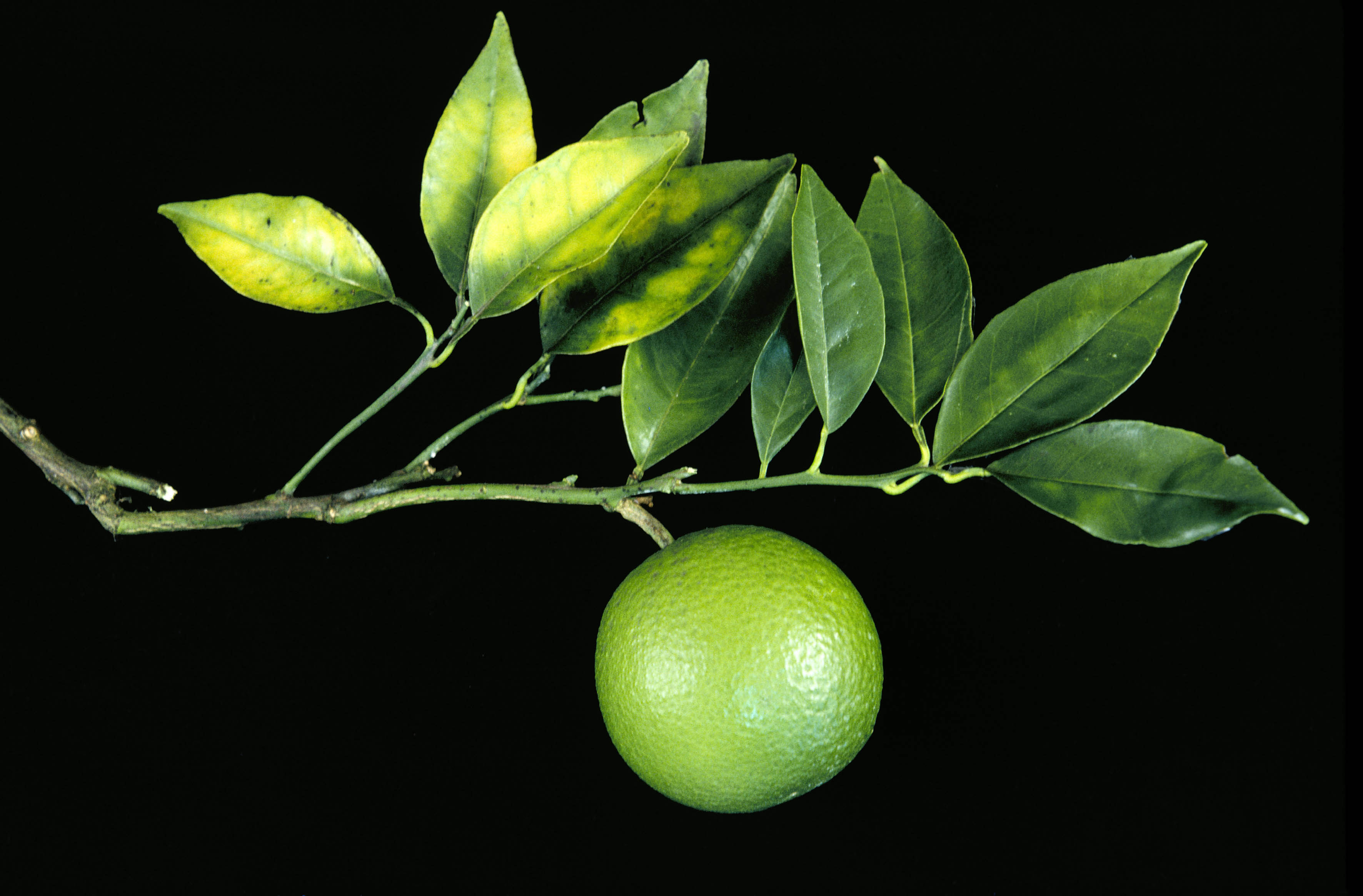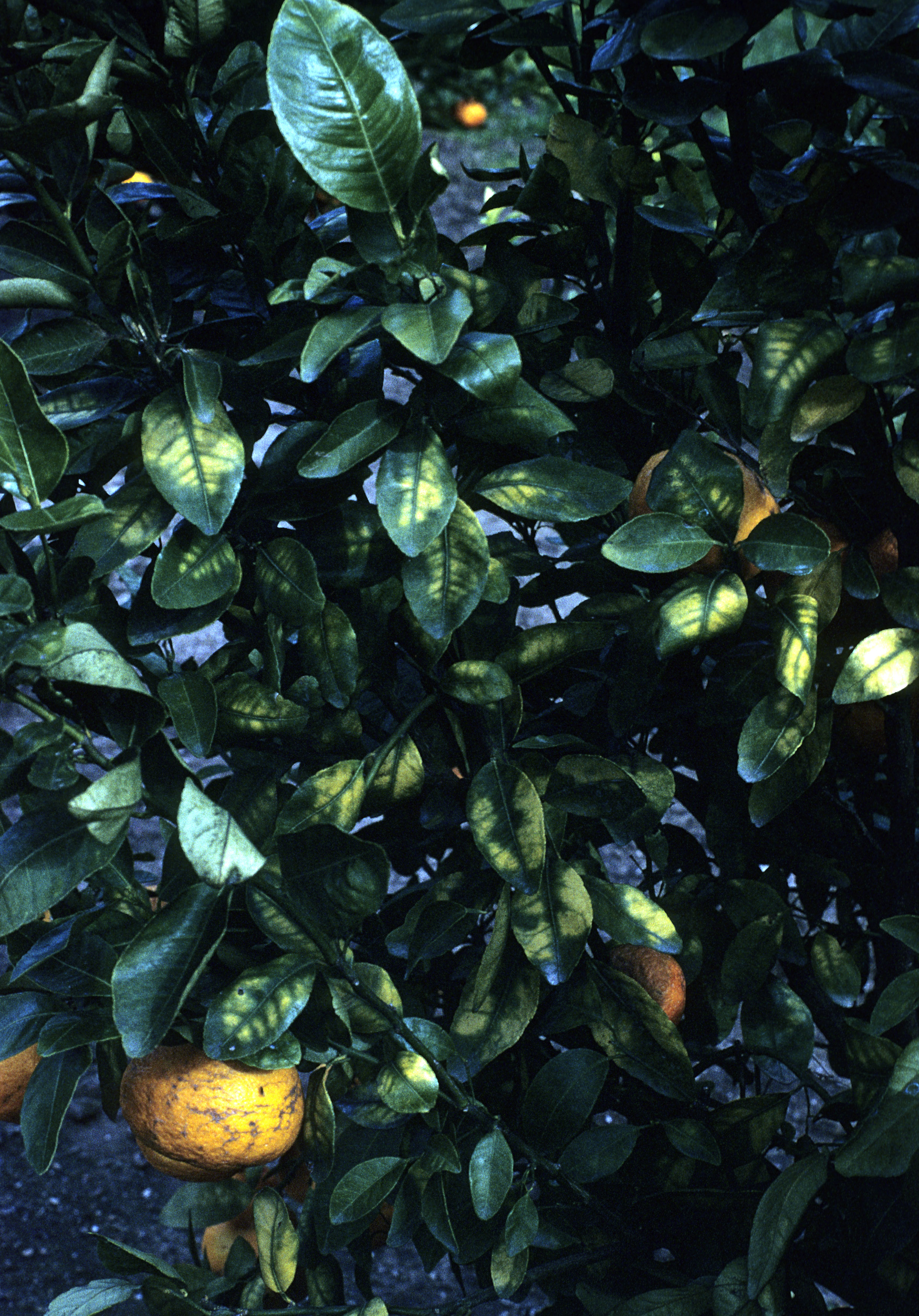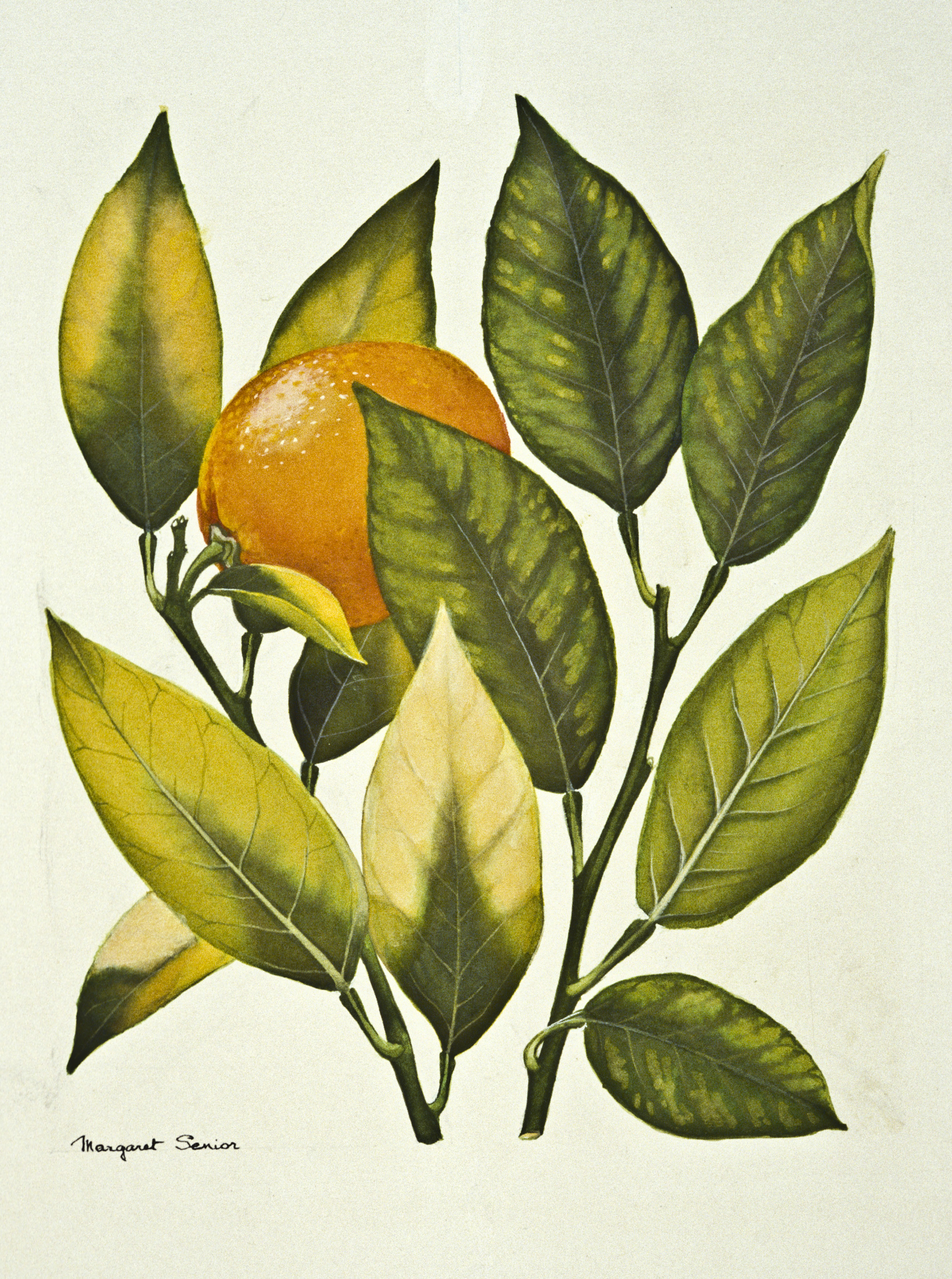
Magnesium and manganese deficiencies in citrus
Summary
Citrus trees are demanding feeders and are prone to many disorders related to mineral nutrition. In New South Wales, citrus can become deficient in essential elements usually obtained from the soil. Magnesium and manganese are two of these.
Magnesium deficiency
Symptoms
Magnesium deficiency is more likely to occur in acid, leached soils near the coast, but it also occurs in citrus orchards along the Murray River, in both acid and alkaline soils.
Symptoms develop on mature leaves during any season, but most usually as the fruit is maturing, especially in limbs bearing a heavy crop. Yellow blotches start near the centre of the leaves and eventually coalesce (Figure 1). The tree will become heavily defoliated while cropping declines (Figure 2). New leaves are at first a normal green, but in severe cases can go yellow before they are one year old.


Control
In moderately acid soil, use magnesite (magnesium carbonate) at an initial rate of 1 tonne per hectare. Subsequent applications will depend on the severity of symptoms and tree size.
If the soil is very acid some lime could be used with the magnesite; the ratio of lime to magnesite can be varied according to the degree of soil acidity. Dolomite can be used if a good quality material is obtainable. Soil applications can take 2 to 3 years to correct the symptoms, but the treatment is long-lasting and might not need repeating for 3 to 5 years. Liming materials such as magnesite or dolomite are not effective in alkaline or neutral soils.
For quick action or in alkaline soils, use a foliar spray of magnesium nitrate. This is made by mixing 1 kg each of calcium nitrate and magnesium sulphate (Epsom salts) in 100 L of water plus 500 mL white oil or a wetting agent. The spray should be used when spring flush leaves are about half to two-thirds grown (October–November). Foliar spray treatments need to be repeated annually and should be supplemented by a soil dressing of magnesite to obtain both quick and long-lasting results
Manganese deficiency
Symptoms
Manganese deficiency is indicated when leaves become mottled with lighter green or yellowish−green areas between the major veins. The veins themselves and bands of tissue on each side remain green (Figure 3). Both young and mature leaves can show symptoms. Where the deficiency is mild the pattern gradually disappears as the leaves age, but if the deficiency is severe the pattern persists in mature leaves.
Persistent severe deficiency results in reduced cropping and growth. The leaves are not reduced in size as they are in zinc deficiency. Manganese deficiency occurs in acid coastal soils where the manganese content is low and alkaline soils, where manganese might be present but unavailable to the plant.

Control
Manganese is best applied as a foliar spray in spring or summer, when new growth is being made.
Where severe, persistent deficiency exists, use 100 g manganese sulphate in 100 L water. Do not spray if rain is expected within 48 hours.
If zinc is also deficient, make up a composite spray with 150 g zinc sulphate and 100 g manganese sulphate in 100 L water.
A more weather-resistant spray can be made from 500 g manganese sulphate, 250 g hydrated lime, 100 L water and 500 mL white oil emulsion. For a mild deficiency 200 to 300 g of manganese sulphate per 100 L of water, plus 100 to 150 g of hydrated lime, is sufficient.
Dissolve the manganese sulphate in the spray tank with most of the water. Mix the hydrated lime to a thin cream and pour through a fine mesh filter into the tank, with the agitator working. The white oil should be broken down with a little water and added last.
Warning: As the manganese/lime spray produces a dark and persistent residue, time spray applications to avoid marking the fruit.

